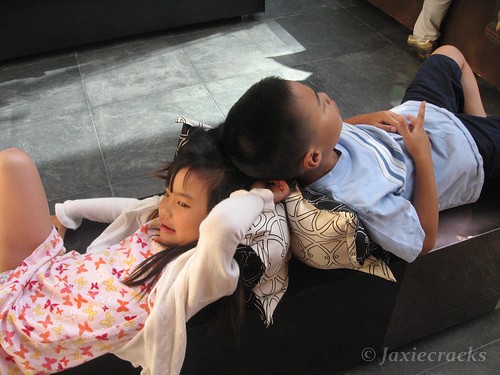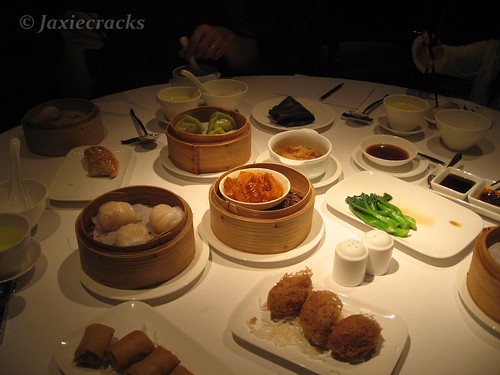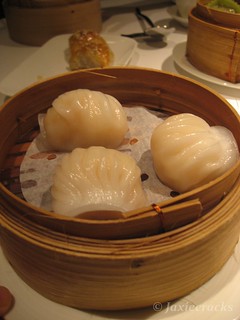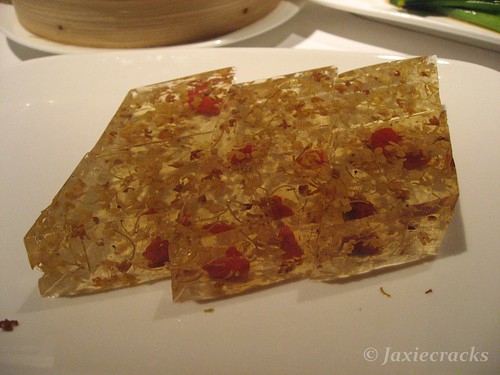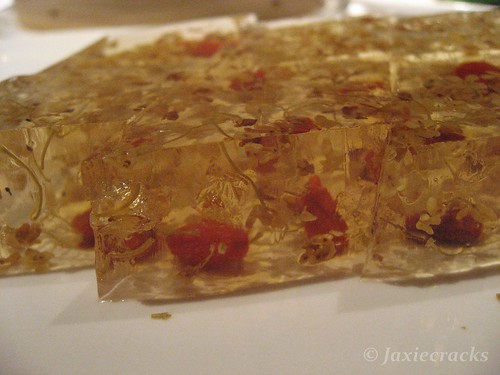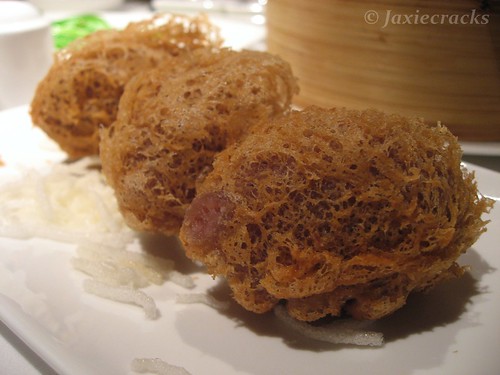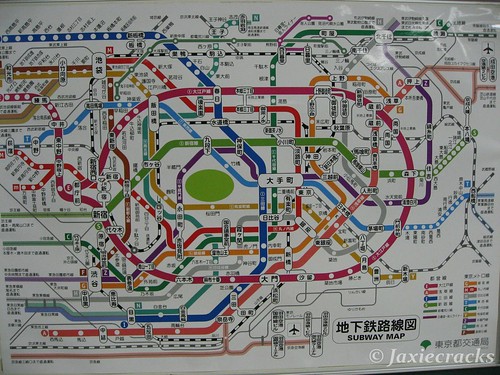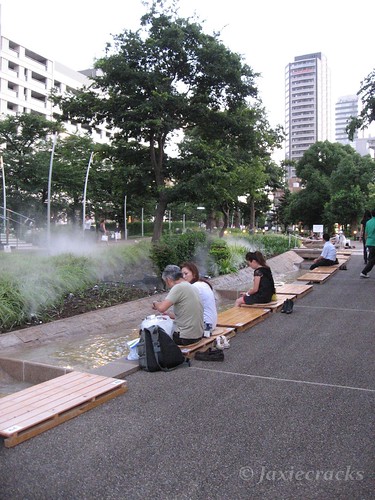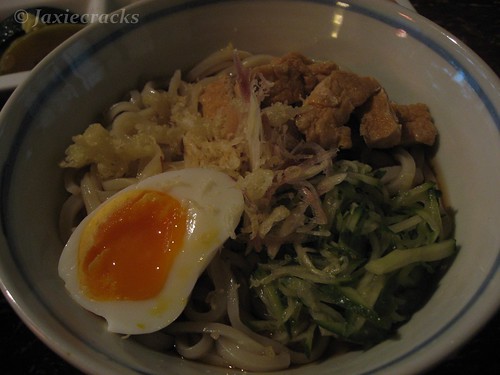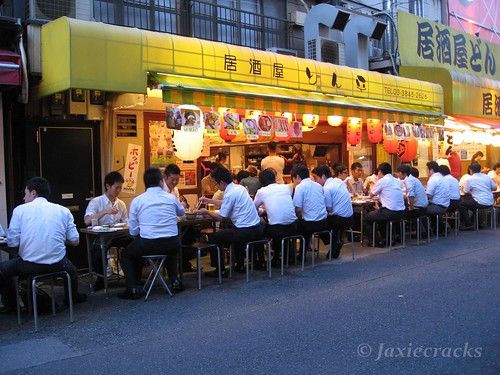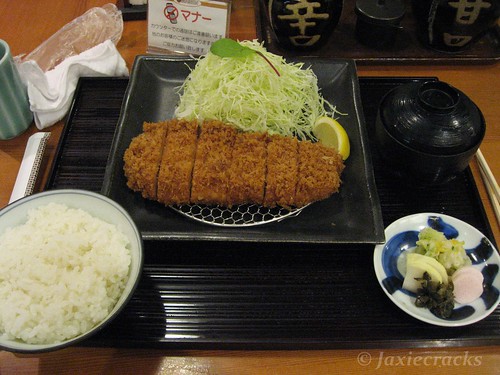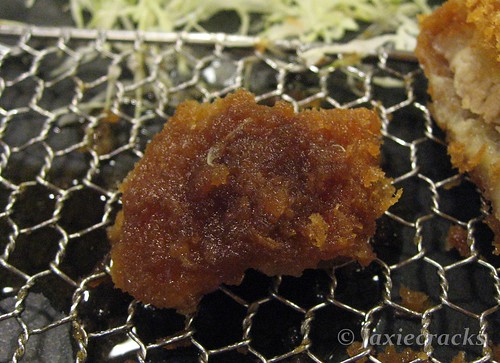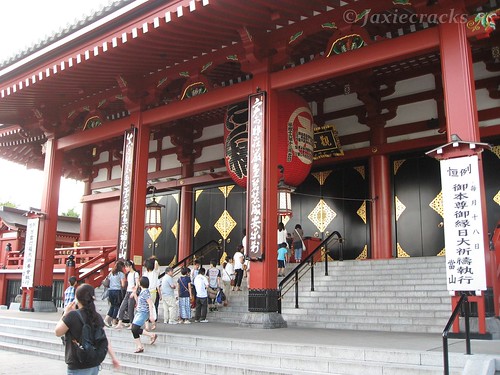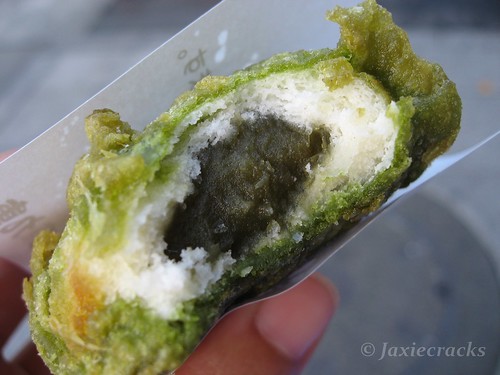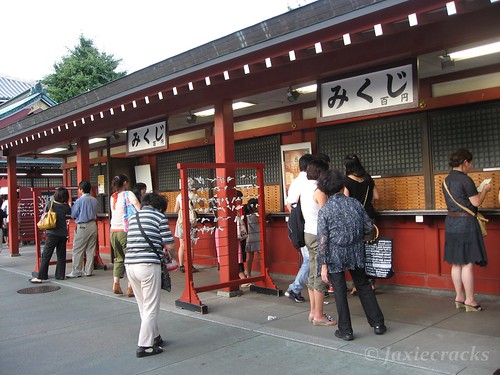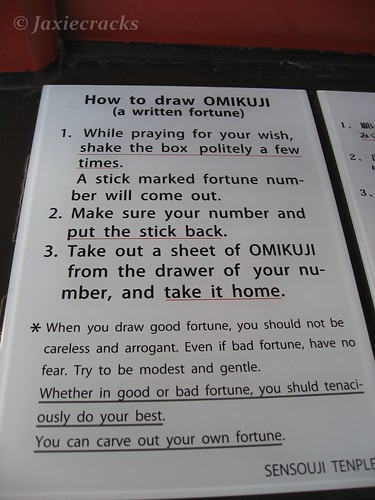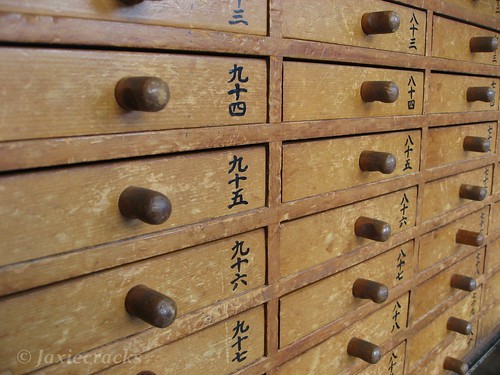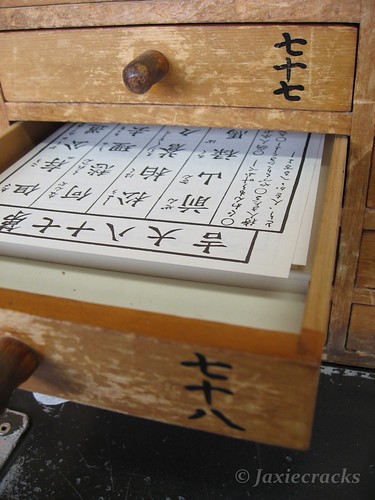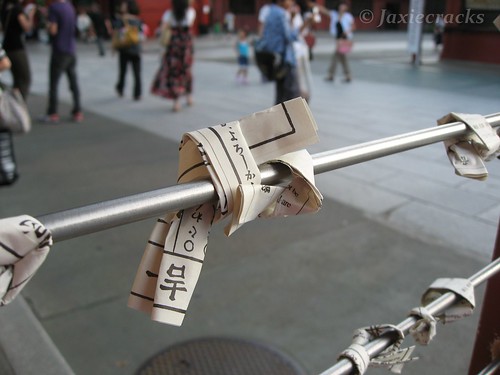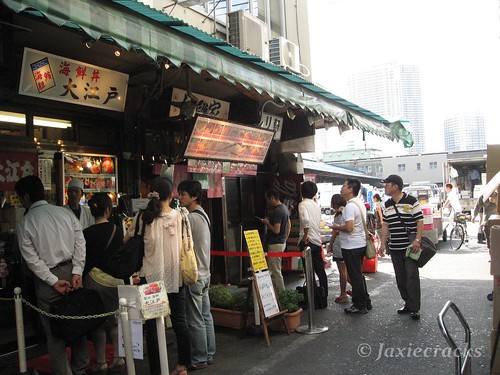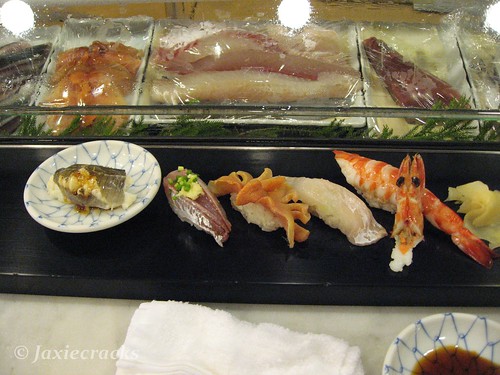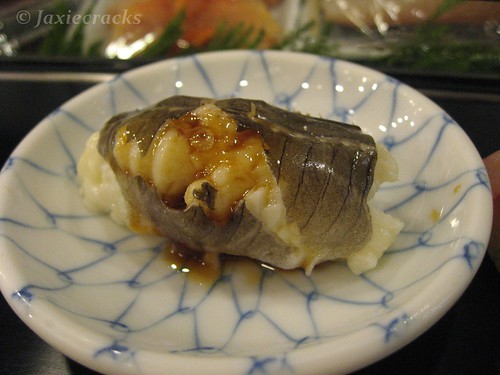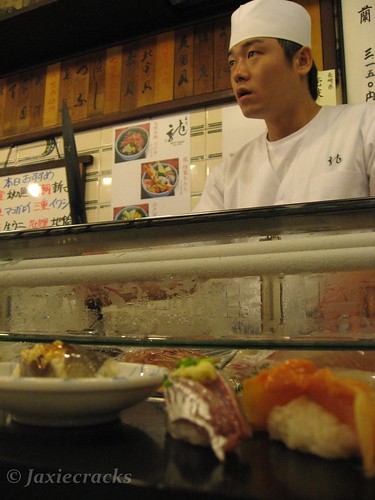In the States, dim sum is generally a casual affair. As with most American Chinese cuisine, its hallmarks involve tasty, quick food at a cheap price with minimal attention paid to the quality of service. More often than not, it's raucous, noisy, and crowded, with some jostling for the har gow lady's attention to be expected because no one's about to settle for anything less than the shrimp dumplings that JUST came out of the kitchen. Even the "nicer" dim sum places (some might say the "gwailo" dim sum places) are still more large than intimate, the previous night's Chinese wedding banquet hall transformed into rows of ten-tops crowded with tea-swilling regulars. Only the glittery foamcore cut-out names hanging on the wall mark any change in experience from week to week.
Suffice it to say, then, that dim sum as I grew up with it, is not a "precious" experience. The Chinese are a feisty bunch, and when delicious delicious bbq pork buns are at stake, there's no time to worry about the teapot that invariably leaks on the tablecloth as you refill your neighbor's cup, or whether the eggs in the custard tarts were free-range.
At least, that's what I thought dim sum was about, until I had "all-you-can-eat" dim sum at the W Hotel at Kowloon Station in Hong Kong. I would venture to say that the W brand tends to be too cool for me on any given day, but the disconnect between this mod boutique hotel line and my clearance Old Navy duds and 4 year old Target sandals seemed especially striking early on a Saturday morning (the all-you-can-eat offer is only available from 9:30-11:00 am). As a twenty-something, there's also nothing to up your cool factor like going out with your parents and young niece and nephew. Much as I adore their company, I think they all needed a giving or taking of about 20 years to make our motley crew fit into the target demographic of the W hotel hip yuppie.
As we entered the lobby through stylishly massive doors, vaguely techno music pulsated around us. Appropriately beautiful people stood behind the registration counter, ready to cater to the whims of the slightly more beautiful people who stay in such places.
Then I turned to the right, expecting to see supermodels and TV celebrities waiting for their fancy cars to be brought round. Instead, I was bemused to find a small gaggle of decidedly plebeian families. Parents crowded anxiously around the closed doors of the Sing Yin restaurant, waiting for the magic hour when the dim sum feast would begin. Meanwhile, their assorted kids frolicked amidst a giant iron horse sculpture, and plastic black boxes that were too sleek to be comfortable seating implements. As my niece and nephew experimented with the utility of cushions on a backless sofa, I was grateful that they might be spared the burden of self-consciousness for another few years at least.
As befit its mod surroundings, far and away, dim sum at the W was the fanciest dim sum I've ever had (at HKD$175 per person, or about USD$23, it was probably also the most expensive dim sum I've ever had). Gone were the claustrophobic arrangements of tables designed for 10 but squeezing in 15. Gone was the bright lighting that makes dim sum a curious Sunday rendezvous for hip and hungover twenty-somethings. Gone was the noise, the chaos, the flat-screen TVs showing Chinese dramas or the football game.
Instead, what followed for the next two and a half hours was a decidedly refined and civilized affair. The five of us occupied what amounted to a semi-private room, surrounded by painted glass panels. Our chairs came with armrests and cushions; no fighting for extra chopstick-maneuvering room here. The interior of the restaurant was dark, and the selective lighting both lent a certain atmosphere to my foodie pictures and made me curse my low ISO settings.
It's interesting what happens when you take familiar food out of its usual context. While other Hong Kong restaurants have expanded beyond the usual har gow, siu mai, char siu bao rotation into more innovative and experimental dishes, the W selection deviated little from the expected list of dim sum staples.
And yet, the setting definitely made a difference vis a vis the eating experience. Even the picture a few paragraphs above, simply capturing our table and assorted dishes, evokes sophistication rather than banality. While other travellers might take pictures of their overcrowded tables in a noisy dim sum hall to say, "I am cool because I travel to exotic places to eat exotic food," this picture draws upon a different kind of a cool, a "W" cool, rather than a "Lonely Planet" cool.
Though chrysanthemum and goji berry jelly generally impresses, the dessert appeared particularly rapturous under the dramatic lighting.
Fried spring rolls, neatly lined up on a white platter, seemed to hold a deeper message.

